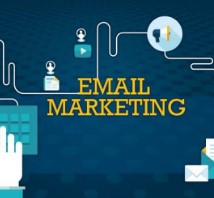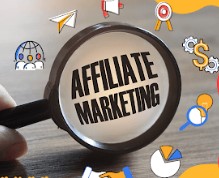Affiliate marketing has become one of the most popular and effective ways to generate income online. For those involved in affiliate programs, it can be a rewarding venture, but to truly maximize earnings, marketers need to leverage all available tools and strategies. One of the most powerful and often underutilized tools in affiliate marketing is email marketing.
Email marketing allows affiliate marketers to directly reach their target audience, build relationships, and deliver tailored content that can drive conversions. When executed properly, email marketing can significantly boost affiliate revenue by increasing trust, engagement, and sales. In this article, we will explore the ways affiliate marketers can use email marketing to grow their revenue.
1. Understanding Affiliate Marketing and Email Marketing
Before diving into the strategies, it’s important to understand both affiliate marketing and email marketing.
What is Affiliate Marketing?
Affiliate marketing is a performance-based business model where an affiliate earns a commission by promoting another company’s products or services. The affiliate typically shares unique tracking links and earns a commission when a sale or desired action is completed through their referral.
What is Email Marketing?
Email marketing is a digital marketing strategy that involves sending emails to a list of contacts with the aim of building relationships, sharing valuable content, and driving conversions. It can be used for promotional campaigns, newsletters, product updates, and personalized content.
The combination of these two powerful tools—affiliate marketing and email marketing—provides an excellent opportunity for marketers to not only increase revenue but also improve customer retention and loyalty.
2. Building a High-Quality Email List
The foundation of any successful email marketing campaign is a strong, engaged email list. For affiliate marketers, this list represents the primary audience to whom products and services can be promoted. However, building a high-quality email list takes time and effort.
Tips for Building Your Email List:
Offer Lead Magnets: Lead magnets are valuable resources (such as free ebooks, guides, checklists, or webinars) that entice people to sign up for your email list. These lead magnets should be relevant to the products you are promoting in your affiliate marketing campaigns.
Use Opt-In Forms: Place opt-in forms strategically on your website, blog, or landing pages. Ensure they are easy to find, and offer an incentive to encourage visitors to subscribe. Pop-ups, exit-intent forms, and embedded forms on blog posts are great options.
Leverage Social Media: Promote your lead magnets and email opt-ins through social media channels. Use targeted ads or organic posts to drive traffic to your email list signup pages.
Provide Value from Day One: When someone subscribes to your email list, ensure that you offer value immediately. This can include providing a welcome email that introduces yourself, setting expectations for what they can expect, and offering them a special discount or bonus.
Segment Your Email List: List segmentation is crucial. Segment your audience based on interests, demographics, past behaviors, or interactions with your content. This helps you deliver personalized and relevant content, improving engagement and conversion rates.
3. Crafting Effective Affiliate Offers for Your Email List
Once you’ve built your email list, the next step is to craft compelling affiliate offers that resonate with your subscribers. The key to success in affiliate marketing via email is personalization and relevance. Your emails should provide value while promoting the affiliate products in a way that feels natural to your audience.
Tips for Crafting Effective Affiliate Offers:
Use Personalized Subject Lines: Personalized subject lines help your emails stand out in a crowded inbox. Personalization can include using the recipient’s name or referencing a past purchase or interest. A strong subject line increases the chances of your email being opened, which is the first step toward conversions.
Focus on Benefits, Not Features: When writing affiliate email content, emphasize the benefits of the product or service you are promoting, rather than just listing features. People want to know how the product will solve their problems or make their lives better.
Write Compelling Call-to-Actions (CTAs): Every email should have a clear and compelling CTA. Use action-oriented language like “Get Started Now,” “Claim Your Offer,” or “Discover More.” Make sure the CTA stands out visually by using buttons or bold text.
Leverage Social Proof: Including testimonials, reviews, or case studies in your emails can increase trust and boost conversions. If other people have had positive experiences with the product, your audience is more likely to be persuaded.
Create Time-Sensitive Offers: Urgency and scarcity can be powerful motivators. Consider including limited-time offers, discounts, or exclusive deals in your emails. A countdown timer or mention of limited availability can push subscribers to take action quickly.
4. Engaging Your Email Subscribers
One of the primary challenges affiliate marketers face is building and maintaining a relationship with their email subscribers. Effective email marketing isn’t about bombarding subscribers with constant sales pitches; it’s about delivering value and keeping the audience engaged over time.
Tips for Engaging Subscribers:
Provide Value in Every Email: Even when promoting affiliate products, your emails should offer value. This can come in the form of useful tips, insights, or relevant content. Avoid sending too many emails focused solely on selling; balance promotional content with informational emails.
Create a Content Calendar: Plan your emails ahead of time by creating a content calendar. This ensures that your emails are consistent and relevant, helping you build a relationship with your subscribers and avoiding overwhelming them with too much promotional content.
Send Educational Content: Share blog posts, tutorials, videos, or case studies that educate your audience on topics related to your affiliate products. The more knowledge you provide, the more likely your subscribers are to trust your recommendations and take action.
Run Email-Only Promotions: Offering exclusive promotions and discounts to your email subscribers can encourage loyalty and increase conversions. People are more likely to buy when they feel like they’re getting special treatment.
A/B Test Your Emails: Testing different email elements (like subject lines, CTAs, and copy) helps you understand what resonates with your audience. Regular A/B testing can optimize your emails for better engagement and conversion rates.
5. Using Automation for Efficiency and Scalability
Email automation is a game-changer for affiliate marketers. With automation, you can create a series of emails that automatically go out based on subscriber behavior, saving you time while still delivering personalized, relevant content.
Tips for Using Email Automation:
Welcome Sequences: Set up an automated welcome email series to introduce new subscribers to your brand and affiliate offerings. This is an excellent opportunity to promote your best affiliate products while building trust with your new subscribers.
Behavior-Based Triggers: Use automation to send targeted emails based on specific actions taken by your subscribers. For example, if someone clicks on a link to a product in your email but doesn’t make a purchase, you can trigger a follow-up email offering a discount or additional information.
Drip Campaigns: Drip campaigns are a series of automated emails sent over a set period. They are an effective way to nurture leads and gradually introduce affiliate products. For example, you can drip content on a topic related to an affiliate product and eventually include a CTA for the product as the final step.
Cart Abandonment Emails: If your affiliate program involves a shopping cart, automate abandoned cart emails to recover potential lost sales. A simple reminder or a discount offer can encourage a subscriber to complete their purchase.
6. Analyzing and Optimizing Your Email Campaigns
Once your email campaigns are up and running, it’s crucial to track and analyze their performance. By understanding the metrics that matter, you can continuously optimize your efforts and improve your affiliate marketing revenue.
Key Metrics to Track:
Open Rates: A high open rate indicates that your subject lines are compelling and your audience is interested in your emails. Aim for an open rate of 20-30%, but remember that this varies by industry and list quality.
Click-Through Rates (CTR): CTR measures how many people clicked on the affiliate links in your email. A high CTR means your content is engaging and the offers are relevant to your audience.
Conversion Rate: Ultimately, the goal of your email marketing campaign is to drive conversions. Track how many subscribers complete the desired action (such as purchasing an affiliate product) after clicking on your links.
Unsubscribe Rates: A sudden increase in unsubscribe rates can indicate that you’re sending too many promotional emails or that your content isn’t relevant. Adjust your strategy accordingly to keep subscribers happy.
By continuously analyzing these metrics, you can tweak your emails, subject lines, and offers to maximize affiliate sales.
Email marketing is an essential tool for affiliate marketers looking to grow their revenue. With a targeted approach, compelling offers, and a focus on building relationships with your audience, email marketing can significantly boost your affiliate earnings. By consistently offering value, personalizing content, and optimizing your campaigns, you can build a loyal subscriber base and turn them into repeat customers, driving long-term success in affiliate marketing



